Yakisoba
- By Jennifer Segal
- Updated April 7, 2025
- 34 Comments
- Leave a Review

This post may contain affiliate links. Read my full disclosure policy.
Whip up some yakisoba tonight! Stir-fried Japanese noodles mixed with savory meat, fresh veggies, and a tasty sauce make the perfect quick-fix dinner.
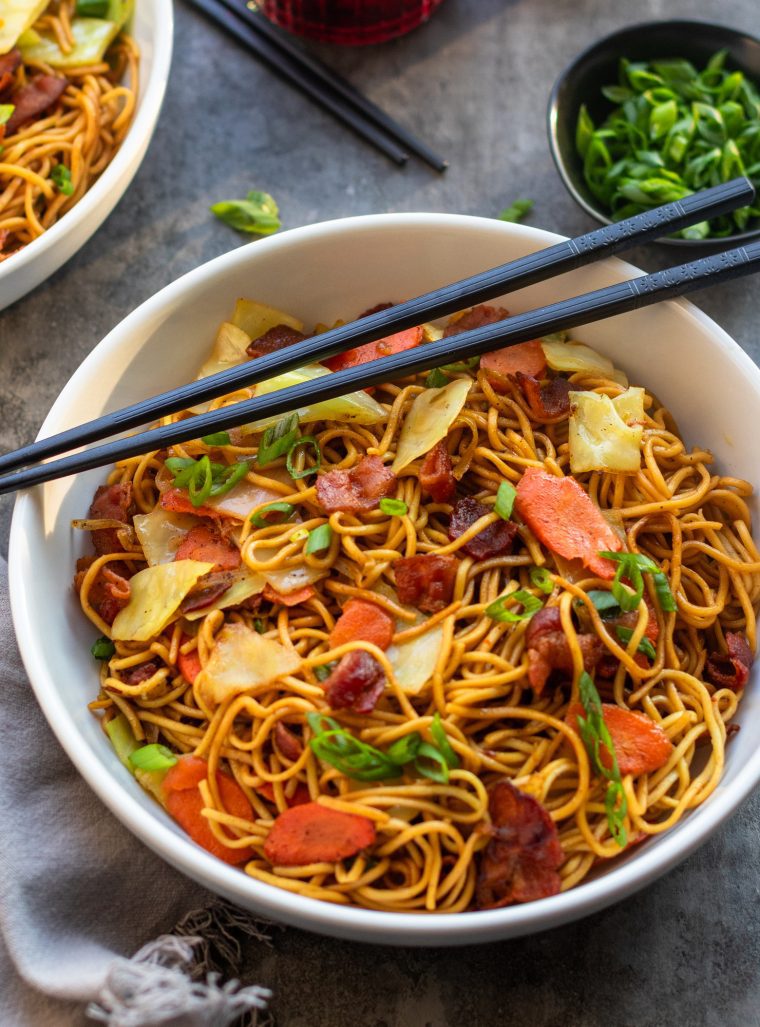
Yakisoba noodles are a popular Japanese dish, enjoyed everywhere from the bustling yatai (street food stalls) to the comfort of home kitchens. These stir-fried noodles marry a variety of ingredients like pork, cabbage, onions, and carrots with a savory yet slightly sweet sauce with a distinct Worcestershire flavor (yes, Worcestershire sauce is used in Japanese cooking!). It’s a versatile one-skillet dish that makes a quick and satisfying supper.
Adapted from Make It Japanese: Simple Recipes for Everyone by Rie McClenny, this yakisoba recipe is not only delicious but also practical. By using bacon instead of the traditional thinly sliced pork belly, it’s easy to gather all the ingredients from your local supermarket without compromising on flavor.
If you’d prefer to use chicken, shrimp, or tofu instead, just cook them in a bit of oil until done, then toss them in with the noodles and veggies. The flexibility of this recipe reflects the spirit of the book: making Japanese home cooking simple and approachable for everyone.
“I love Asian noodle dishes and this did not disappoint (didn’t even need to go to the grocery store)! Added shiitake mushrooms b/c I had them on hand. Thrilled to make a fantastic dinner with one pan!”
What You’ll Need To Make Yakisoba
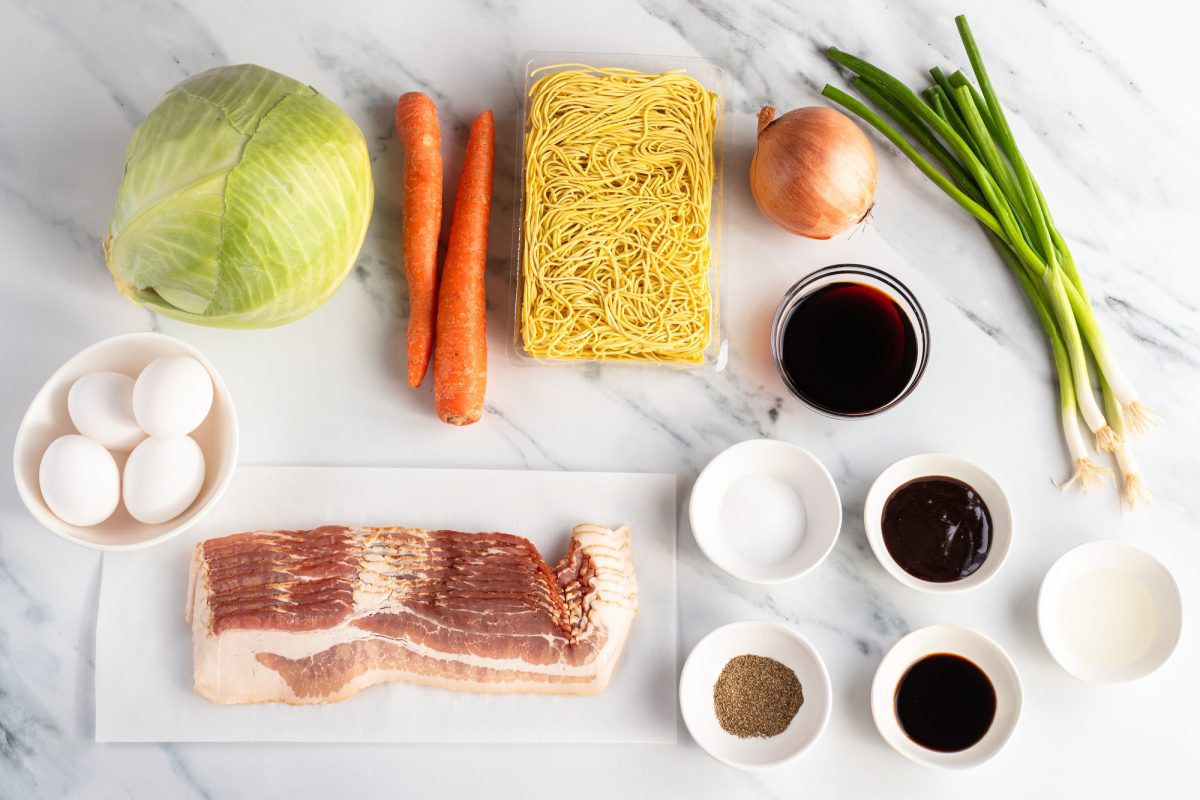
- Yakisoba noodles: Fresh yakisoba noodles are great if you can find them (check the refrigerated or frozen section at Asian grocery stores), but dried chow mein stir-fry noodles work really well too (that’s what I used). Even spaghetti will do in a pinch. Just note that if you’re using dried noodles, you’ll need about half as much by weight.
- Soy sauce: This is the base of the sauce—salty, savory, and full of umami.
- Worcestershire sauce: Adds a little tang and depth, giving the sauce that signature yakisoba flavor.
- Mirin: A sweet Japanese cooking wine that helps balance out the saltiness and tanginess in the sauce.
- Hoisin sauce: Brings in some sweetness and a garlicky kick—a great little flavor boost.
- Bacon: Adds smoky flavor and acts as the main protein here. It gives the dish a nice, hearty feel.
- Scallions: The white parts get cooked into the dish, while the green parts are saved for garnish — they add a fresh, mild onion flavor.
- Carrots: Bring some sweetness and crunch, plus a pop of color.
- Yellow onion: Contributes sweetness and texture.
- Green cabbage: Gives the dish bulk and crunch. Want to skip chopping? A bag of pre-shredded coleslaw mix works just fine.
- Fried eggs: Totally optional, but highly recommended — the runny yolk mixes into the noodles and makes everything extra tasty. (Here’s my technique for making sunny side up eggs.)
- Jump to the printable recipe for precise measurements
Step-by-Step Instructions
Step 1: Cook the noodles. (Skip this step if using fresh noodles.) For dried noodles, bring a large pot of water to a boil and cook the noodles until very al dente. Drain and rinse with cold water. (Rinsing with cold water not only stops the cooking but also removes excess starch and keeps the noodles from clumping together.)
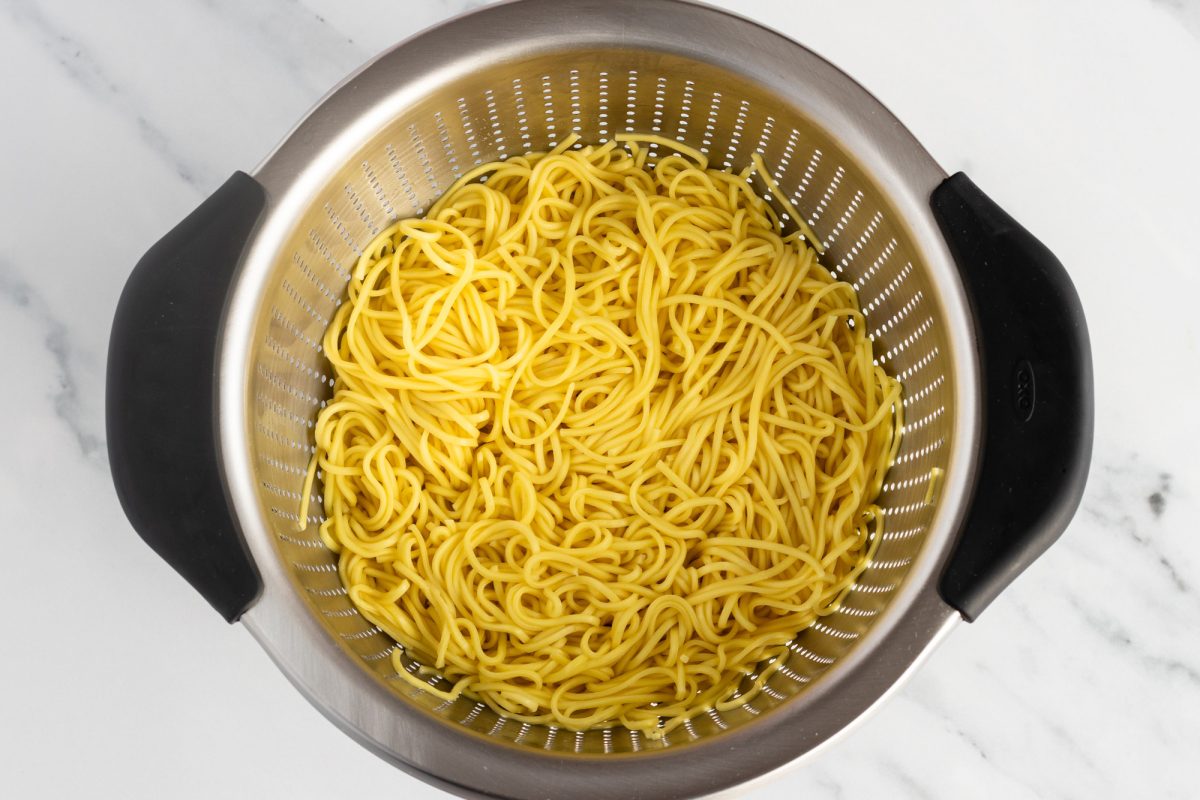
Step 2: Make the sauce. In a small bowl, whisk together the soy sauce, Worcestershire, mirin, and hoisin sauce. Though it’s only three ingredients, making the sauce in advance lets you move quickly during the stir-fry. Stir-fries come together fast, so it’s key to have everything ready to go.
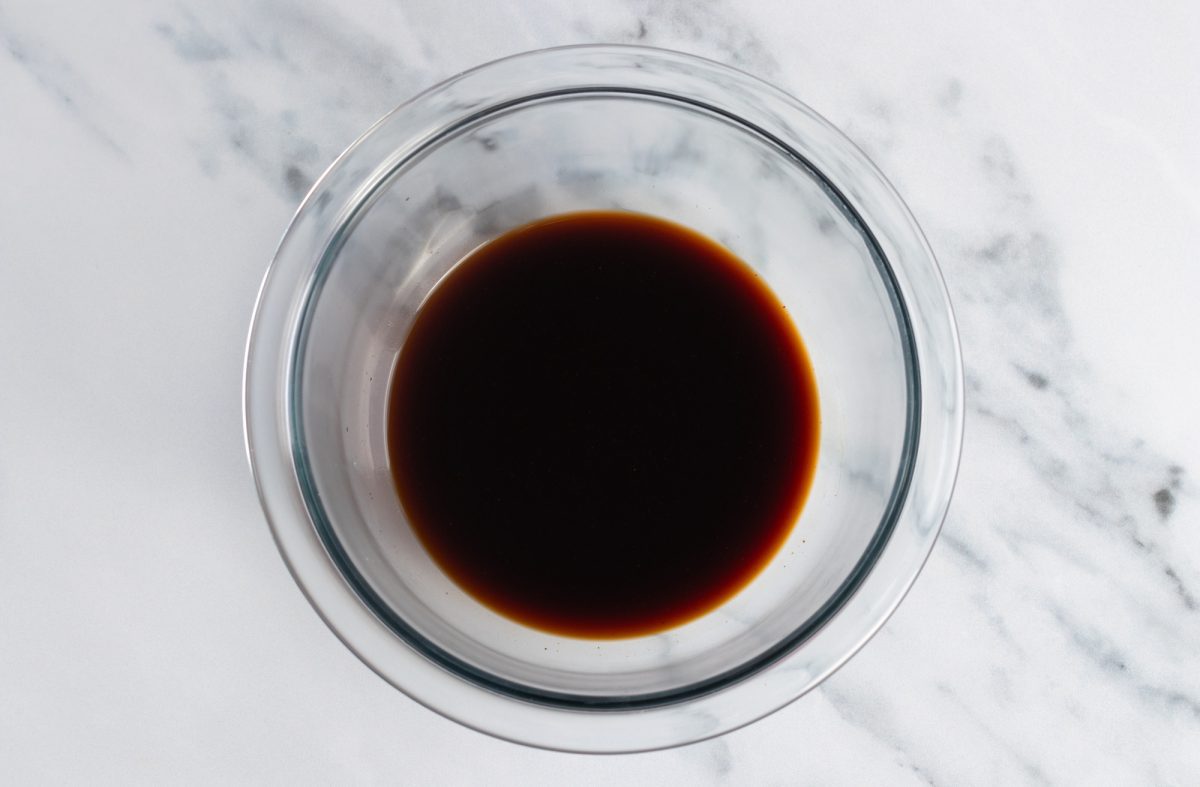
Step 3: Cook the bacon. Add the bacon to a cold nonstick skillet then set over medium-high heat. (Starting with a cold pan helps the fat render slowly, which makes the bacon crispier and yields more flavorful drippings for cooking the veggies.) Cook, stirring frequently, until crispy, 4 to 5 minutes. Use a slotted spoon to transfer the bacon to a bowl, leaving the fat in the skillet.
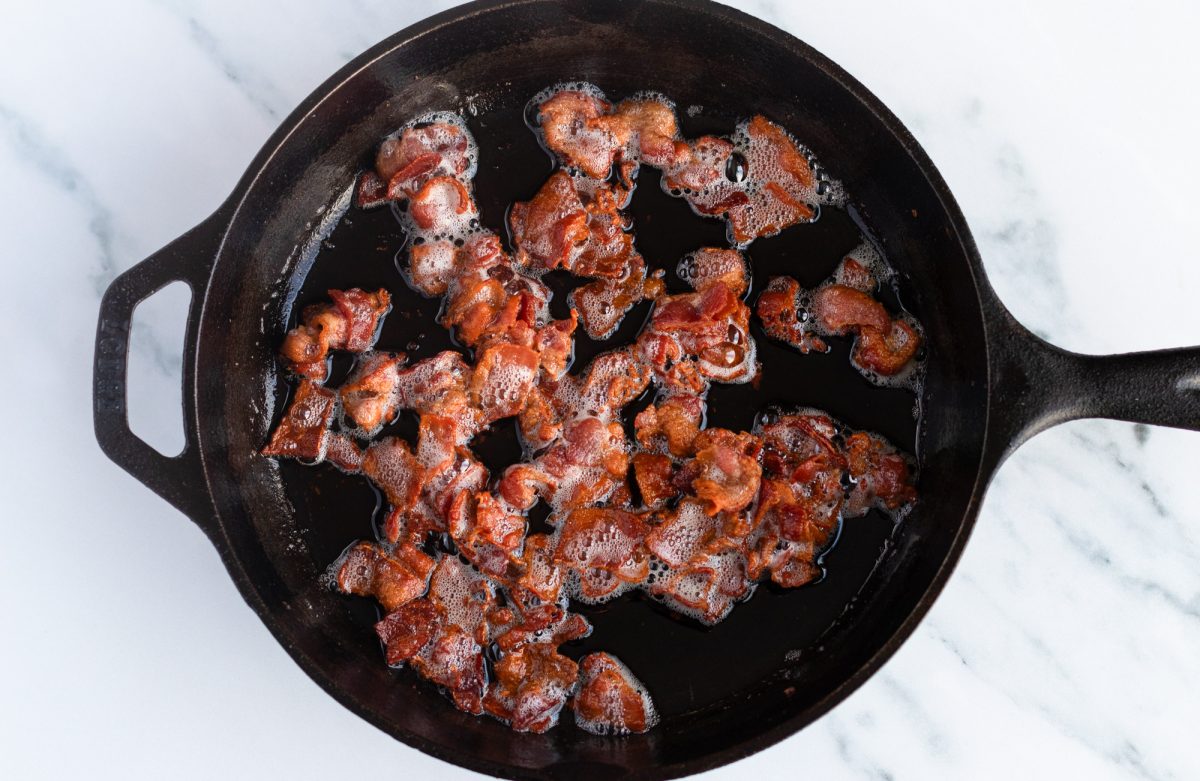
Step 4: Cook the veggies. Add the scallion whites, carrots, and onion to the skillet. Cook for 3 to 4 minutes, until the onion is translucent but not browned—lower the heat if needed.
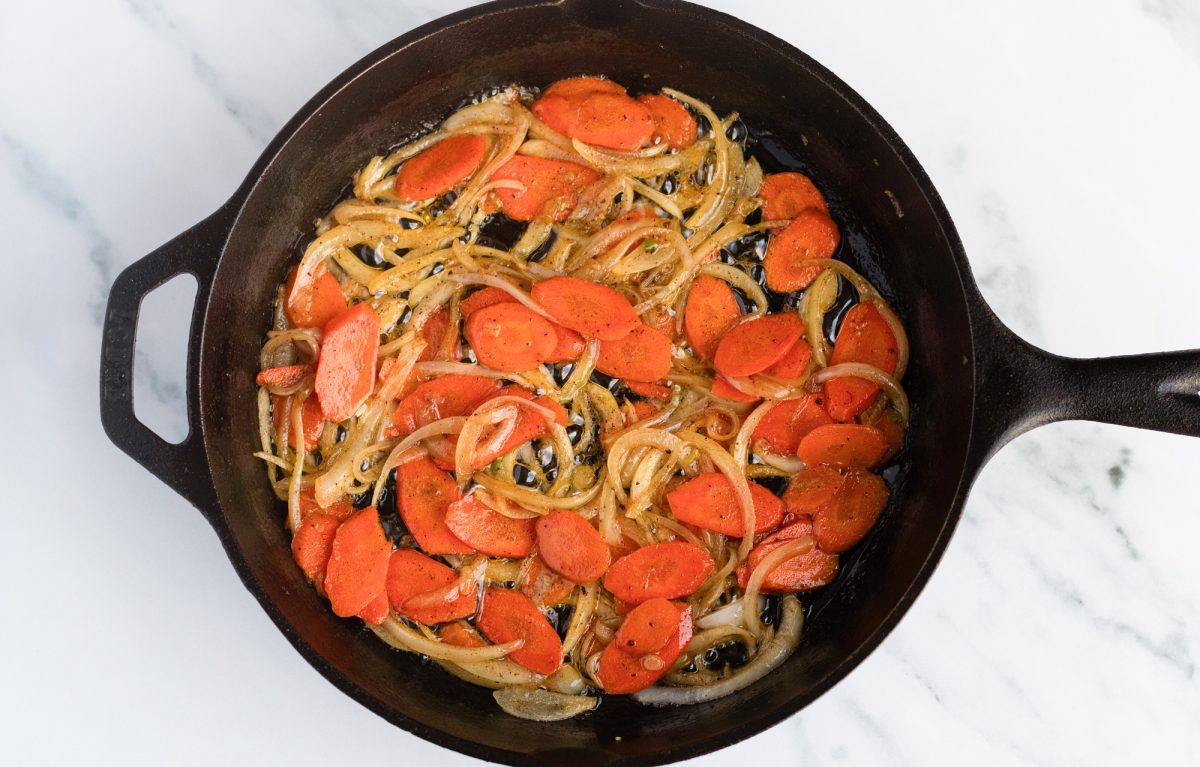
Add the cabbage and cook until soft, about 4 minutes. Season with the salt and pepper then transfer the veggies to the bowl with the bacon.
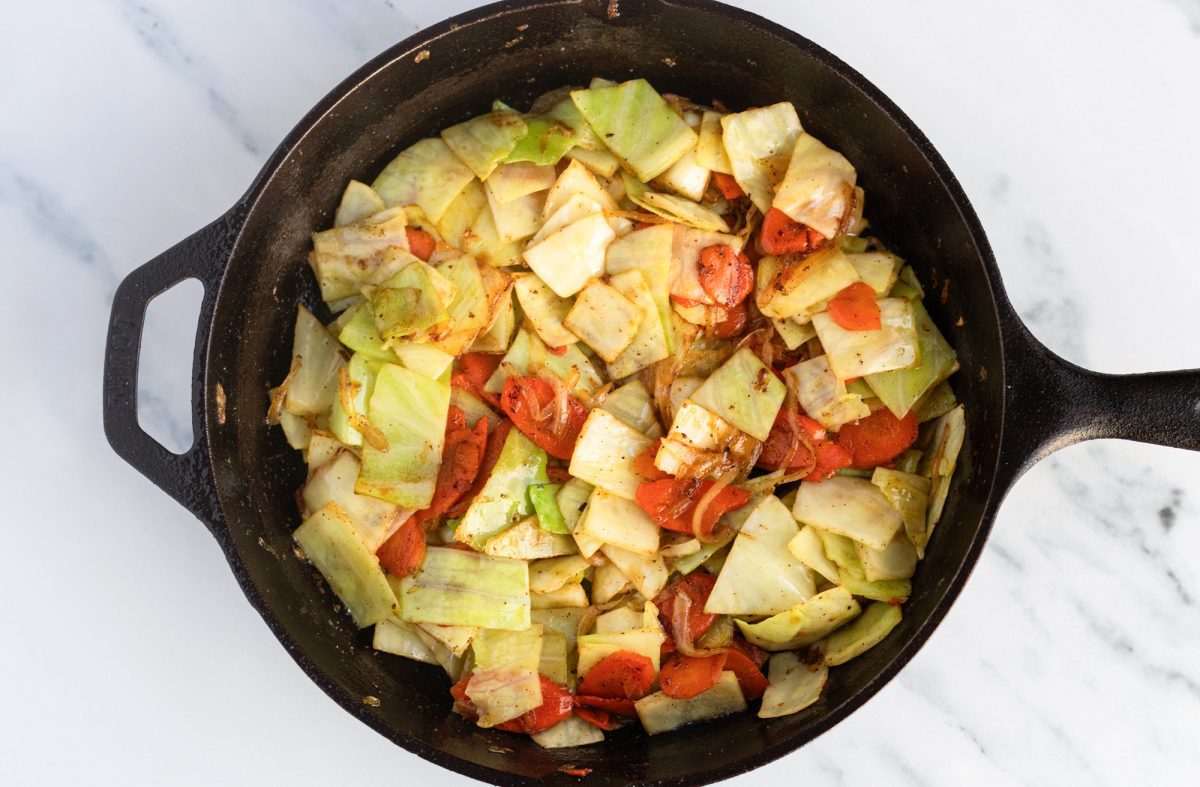
Step 5: Warm the noodles and sauce. In the same skillet, add the noodles and cook for a few minutes to warm through. Add about half the yakisoba sauce and toss to coat.
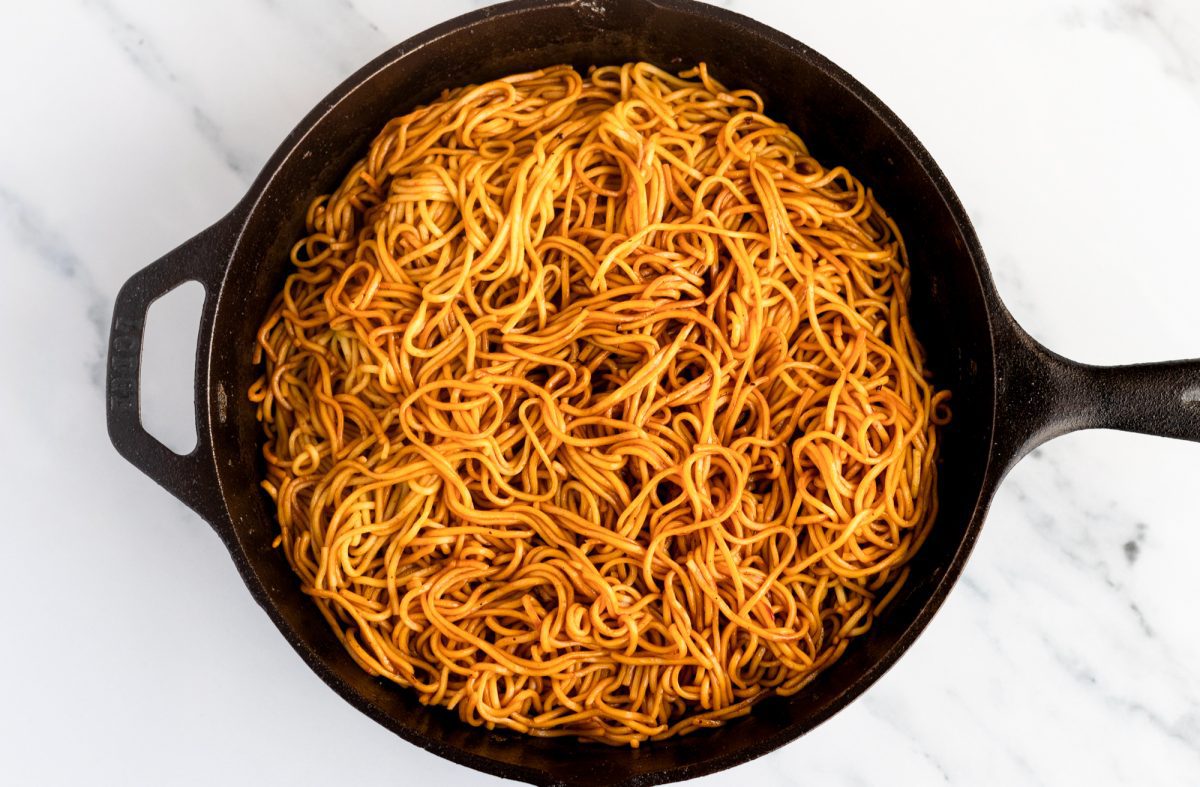
Step 6: Finish the dish. Return the bacon and veggies to the skillet and toss again. Taste and add more sauce as needed, little by little; you may not need it all. Sprinkle with the dark green onions.
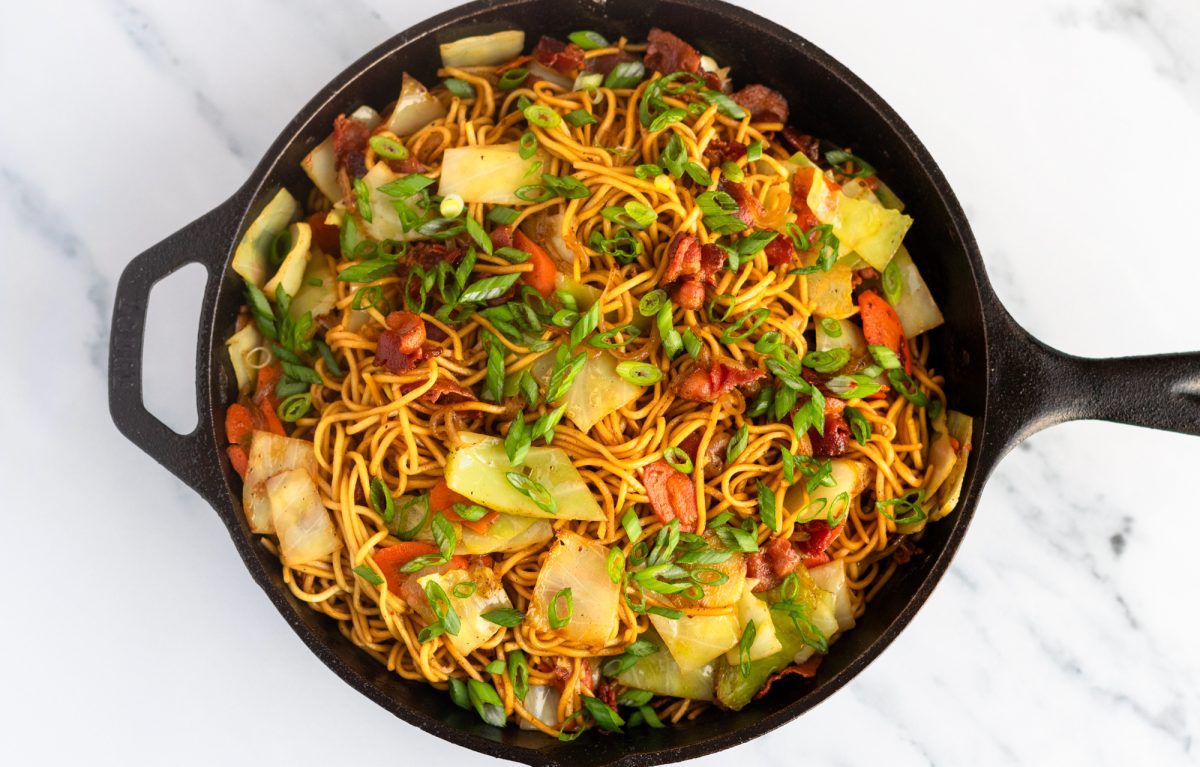
Step 7: Top with a fried egg and serve. If including fried eggs, cook them in a separate skillet while the noodles finish. (A runny yolk adds richness to the dish and acts like an extra sauce—I highly recommended if you like a more luxurious texture!) Serve the yakisoba in bowls with a fried egg on top, if desired.
Yakisoba is best fresh, but it can be made ahead and refrigerated for up to 3 days—just note the bacon will lose its crispiness.
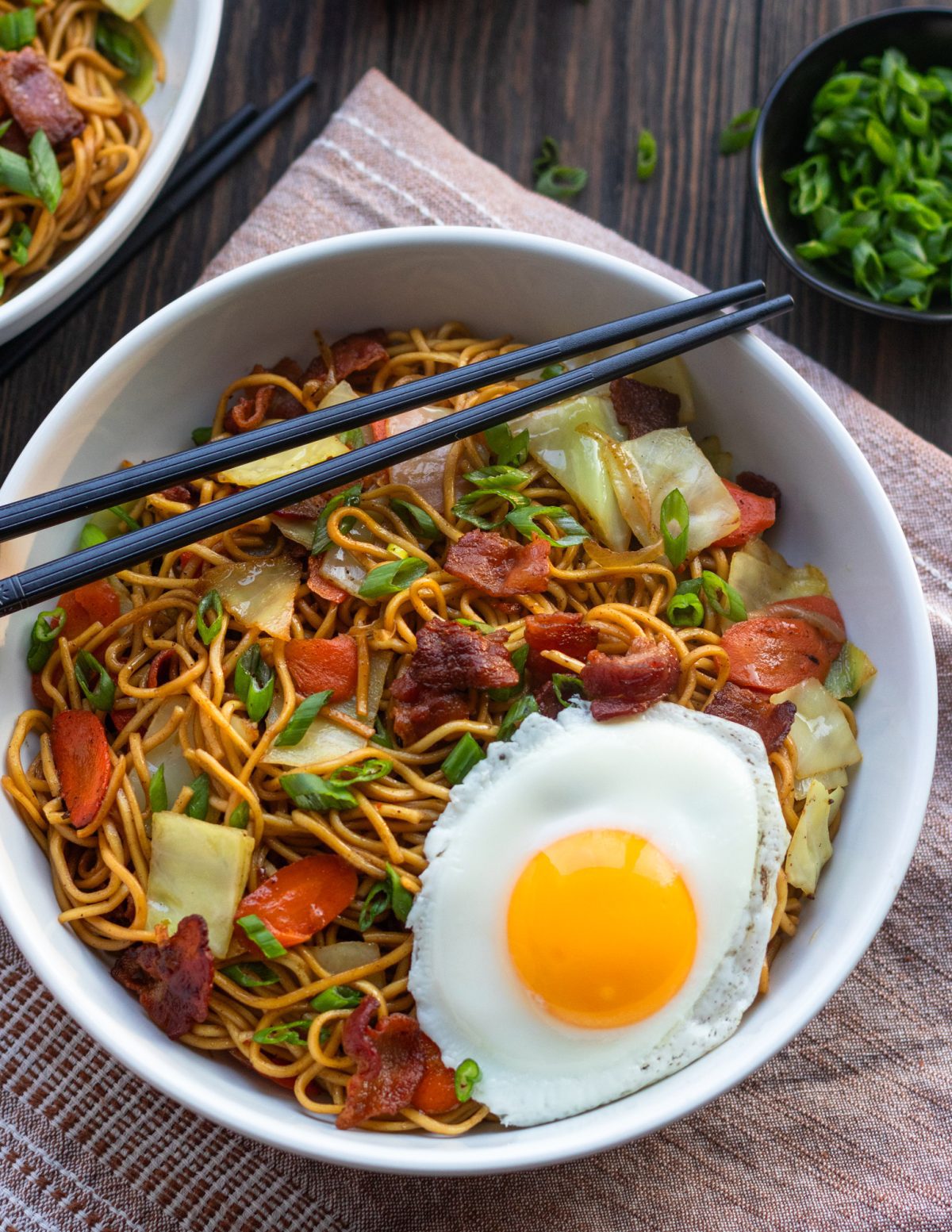
More Asian Dishes You May Like
Yakisoba

Skip the takeout—this homemade yakisoba is loaded with veggies, noodles, and bold flavor, and it comes together in no time.
Ingredients
- 22 oz fresh yakisoba noodles or 12 oz dried chow mein stir-fry noodles (see note)
- ⅓ cup soy sauce
- 1 tablespoon Worcestershire sauce
- 1 tablespoon mirin
- 2 tablespoons hoisin sauce
- 8 slices (8 oz) bacon, cut into 1-inch pieces
- 4 scallions, white and green parts separated, thinly sliced
- 2 carrots, thinly sliced on a diagonal, about ⅛-inch thick
- 1 medium yellow onion, thinly sliced
- ½ pound green cabbage, cut into 1-inch pieces (about 3½ cups)
- ¼ teaspoon salt
- ¼ teaspoon freshly ground black pepper
- 4 fried eggs (optional for serving)
Instructions
- If using dried noodles, boil the noodles: Bring a large pot of water to a boil. Cook the noodles until very al dente. (The noodles I use call for 3 minutes of boiling; I cook them for 2½ minutes. If the timing is different on your package, reduce the time accordingly.) Drain and rinse with cold water to stop the cooking process. (If using fresh noodles, skip this step.)
- Make the Yakisoba Sauce: In a small bowl, whisk together the soy sauce, Worcestershire, mirin, and hoisin sauce.
- Make the Stir-Fry: Add the bacon to a cold nonstick skillet. Turn the heat to medium high and cook, stirring frequently, until the bacon is crispy, 4 to 5 minutes. Using a slotted spoon, transfer the bacon to a medium bowl, leaving the fat in the skillet.
- To the same skillet, add the scallion whites, carrots, and onion and cook until the onion is translucent, 3 to 4 minutes. Do not brown; reduce heat if necessary. Add the cabbage cook until soft, about 4 minutes. Season with the salt and pepper. Transfer the vegetables to the bowl with the bacon.
- To the now empty skillet, add the fresh or drained noodles. Cook for a few minutes, until warmed through. Add about half of the yakisoba sauce to the noodles and toss until evenly coated. Return the vegetables and bacon to the skillet and toss to combine. Taste the dish, and if more flavor is needed, add the remaining sauce little by little; you may not need all of it. Sprinkle with the dark green scallions.
- If you're including optional fried eggs, now's the time to cook them in a separate nonstick skillet. Once done, divide the yakisoba among bowls and place a fried egg on top of each serving, if using.
- Note: Yakisoba is traditionally made with fresh yakisoba noodles, which are available in the refrigerated section of most Asian supermarkets and some large grocery stores. Since they can be hard to find, I use dried chow mein noodles. I like the Wel Pac brand. Note that if using dried noodles, you'll typically need about half the amount in weight compared to fresh.
- Make-Ahead Instructions: While best served fresh, yakisoba can be cooked in advance and refrigerated. Just keep in mind that the bacon will lose its crispy texture if not served fresh. When reheating, warm the dish in a skillet over medium heat or in the microwave, adding a bit of water to loosen up the noodles if necessary.
Nutrition Information
Powered by ![]()
- Per serving (4 servings)
- Calories: 902
- Fat: 29 g
- Saturated fat: 9 g
- Carbohydrates: 127 g
- Sugar: 11 g
- Fiber: 9 g
- Protein: 34 g
- Sodium: 1845 mg
- Cholesterol: 169 mg
This website is written and produced for informational purposes only. I am not a certified nutritionist and the nutritional data on this site has not been evaluated or approved by a nutritionist or the Food and Drug Administration. Nutritional information is offered as a courtesy and should not be construed as a guarantee. The data is calculated through an online nutritional calculator, Edamam.com. Although I do my best to provide accurate nutritional information, these figures should be considered estimates only. Varying factors such as product types or brands purchased, natural fluctuations in fresh produce, and the way ingredients are processed change the effective nutritional information in any given recipe. Furthermore, different online calculators provide different results depending on their own nutrition fact sources and algorithms. To obtain the most accurate nutritional information in a given recipe, you should calculate the nutritional information with the actual ingredients used in your recipe, using your preferred nutrition calculator.
See more recipes:
Comments
Add a Comment Cancel reply
This site uses Akismet to reduce spam. Learn how your comment data is processed.

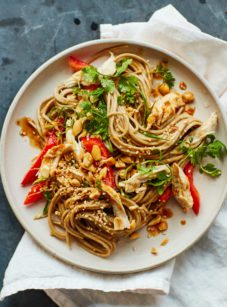
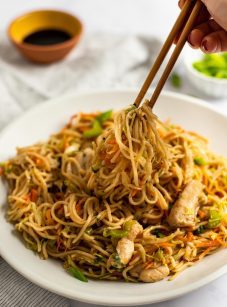
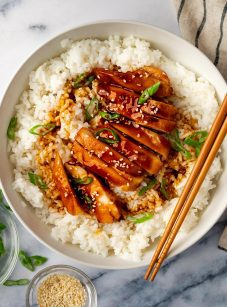

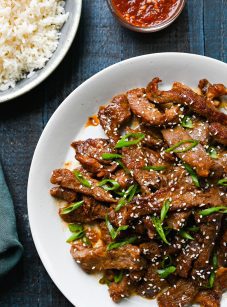
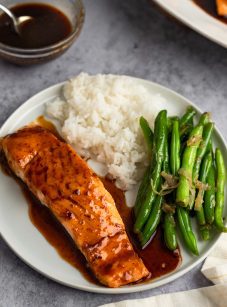
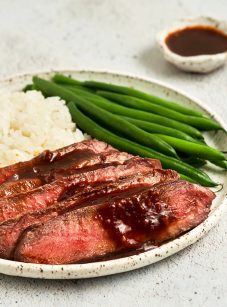
Make last night. Very good!! Used chow mein noodles. Managed to keep vegatables and bacon warm in a large bowl and added the noodles to it once I had heated/mixed them with the sauce in the pan as directed; just gave me more room to mix everything. Had left overs and they reheated in microwave perfectcly without any additional water. Will for sure make again.
We loved this yakisoba recipe! I used the recommended chow mein noodles and shredded cabbage – delish!
Trying this for dinner tonight. Found all the ingredients needed pretty easily. I shop at Ralphs (Kroger) and they had the Mirin in the Asian food aisle. The fresh noodles were located next to the wonton wrappers. Looking forward to it. Love all your recipes. Thanks Jenn!
I lived in Japan for nearly 5 years and made yakisoba at least 2-3 times a month. Bacon is NEVER used in traditional yakisoba! Pork or chicken are used (marinated with a little soy and minced ginger and garlic for an hour or so) and seared in the pan (I use a wok). Remove before cooking the veggies.
Hi Karen, Yes, you’re correct that bacon is not traditional. I mention in the intro that the cookbook author, who is Japanese, uses bacon as an accessible alternative to thinly sliced pork belly. Hope that clarifies! 😊
This was delicious! I followed the recipe exactly but could only find stir-fry rice noodles. I will make this again very soon and shared your recipe with my friends.
Is there a substitute for Mirin?
Hi Mike, If you can’t find mirin, a good substitute is equal parts sake and sugar. If sake is not available, white wine or dry sherry can be used, again mixed with sugar.
What can I substitute for mirin. I’ve looked for this forever and can never find it.
Hi Jusy, Mirin should be relatively easy to find in most grocery stores, especially if they have an Asian food section. You can look for mirin alongside other Japanese cooking essentials like soy sauce and rice vinegar. If you can’t find it there, another common place to check is the condiments and sauces aisle, where it may be placed near other cooking wines and vinegars. That said, if you can’t find it, you can replace it with equal parts sake and sugar or white wine and sugar.
What if we do not eat meat? Bacon is such a strong flavor.
Hi Phil, The bacon does add a lot of meaty flavor, but I still think it’d be delicious without it—the sauce is very flavorful too.
In addition to the bacon, could you recommend some type of chicken or beef to add?
Thank you
Hi Diane, I think chicken thighs would be delicious here.
What could I use instead of Hoisin? I don’t care for it.
Hi Barbara, You can use equal parts soy sauce and molasses or honey. Hope that helps!
How about Soba noodles?
Hi Andrea, Soba (or buckwheat) noodles are not traditional for yakisoba, but I think they’d work. The recipe is pretty flexible!
Thank you!